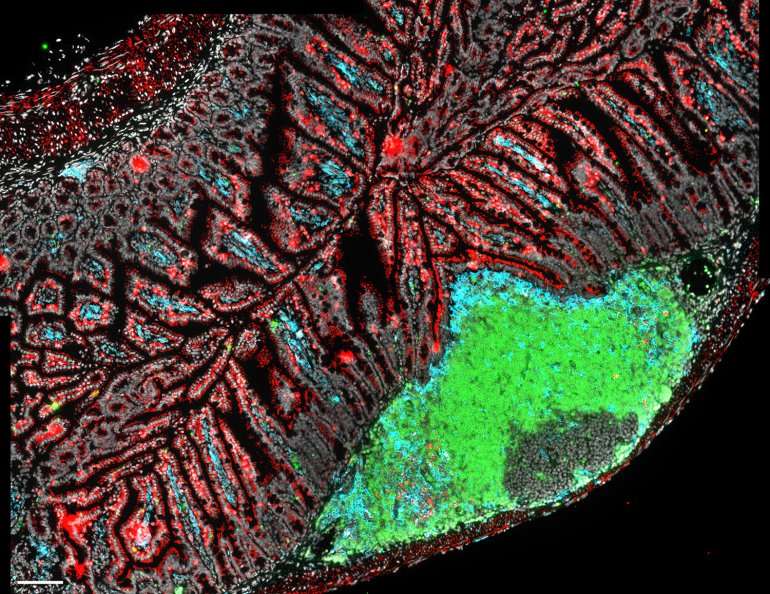Evolving immune fighters in the gut

The inside of our small intestine teems with microbes – our gut microbiome – while just across a thin barrier, the immune system patrols and prepares for battle.
"It's an intricate balance," said Lauren Rodda, a graduate student in biomedical sciences at UC San Francisco. "We want the nutrients from the microbes, but we don't want the microbes themselves to get across."
Rodda, working in the lab of Jason Cyster, PhD, captured that scene in a microscopic image of a mouse gut. The intestine runs from bottom left to top right and is packed with blue and red finger-like protrusions. Sitting adjacent is a dome of immune tissue, labeled green and capped by an oval structure shown in gray.
Rodda is fascinated by what goes on in that gray oval, known as the germinal center. Inside germinal centers, immune cells, known as B cells, compete to be the best at recognizing an invading pathogen – and only the most fit are selected to survive.
"The germinal center is this microcosm of natural selection that mimics what happens over eons, during the evolution of organisms," Rodda said.
By undergoing this rapid natural selection in miniature, immune cells can keep pace with enemy viruses and bacteria that replicate and mutate by the hour to disguise themselves. Immune cell "evolution" is essential to our ability to fight off infections – that's why Rodda wants to understand how germinal center organization makes it possible.
Within germinal centers, microbe-fighting B cells mutate and proliferate in a compartment known as the dark zone. Then, they travel to another compartment called the light zone, where selection happens.
Rodda is especially interested in structural cells called stromal cells, which help set up these compartments and direct immune cell traffic between them. Stromal cells have to provide clear instructions to immune cells to coordinate the development of a healthy and effective immune response.
"In order for our immune system to function properly we need cells to move between compartments in a very organized and specific order, so that selection continues to refine the B cells' ability to recognize the foreign pathogen," Rodda said.



















